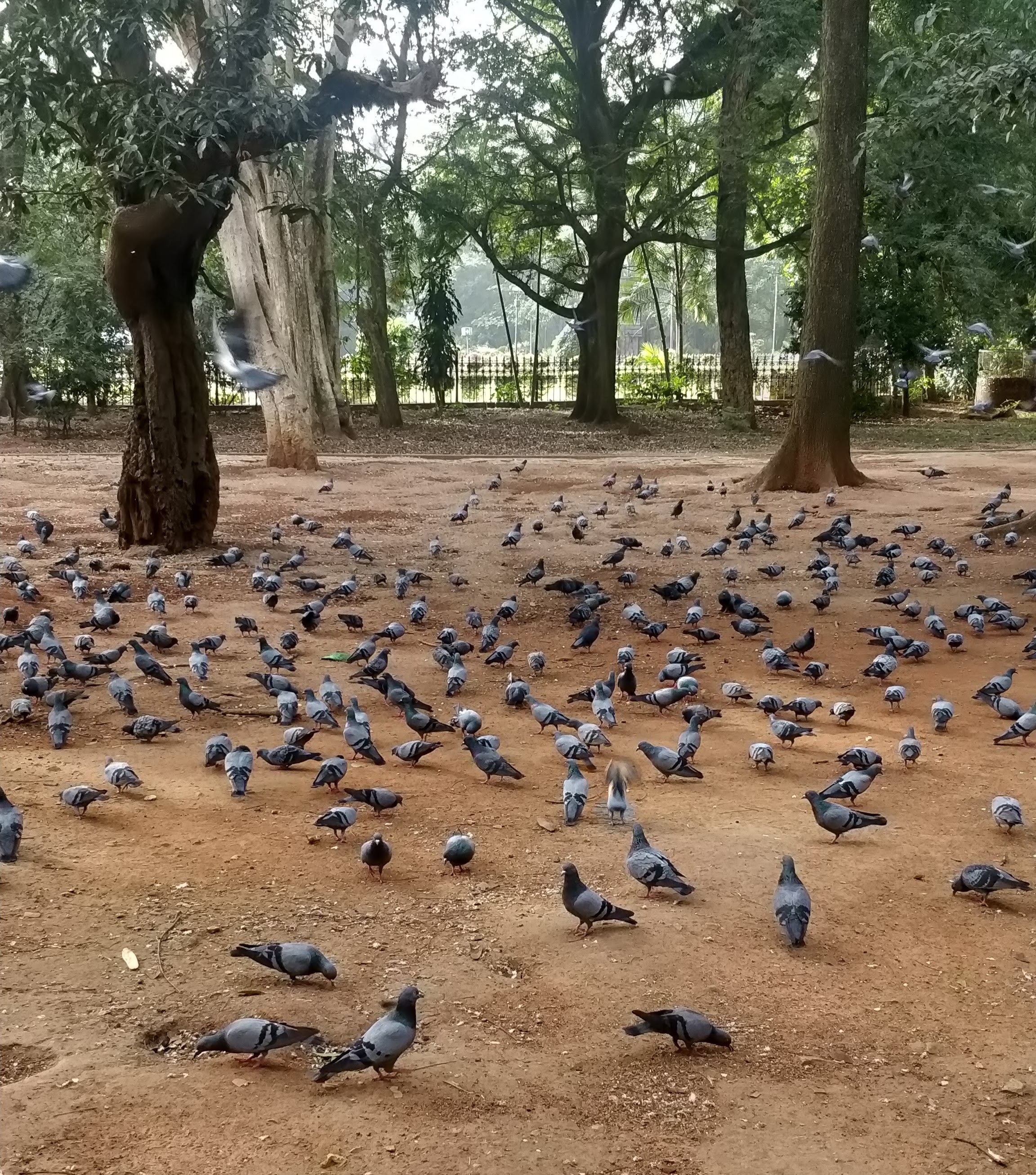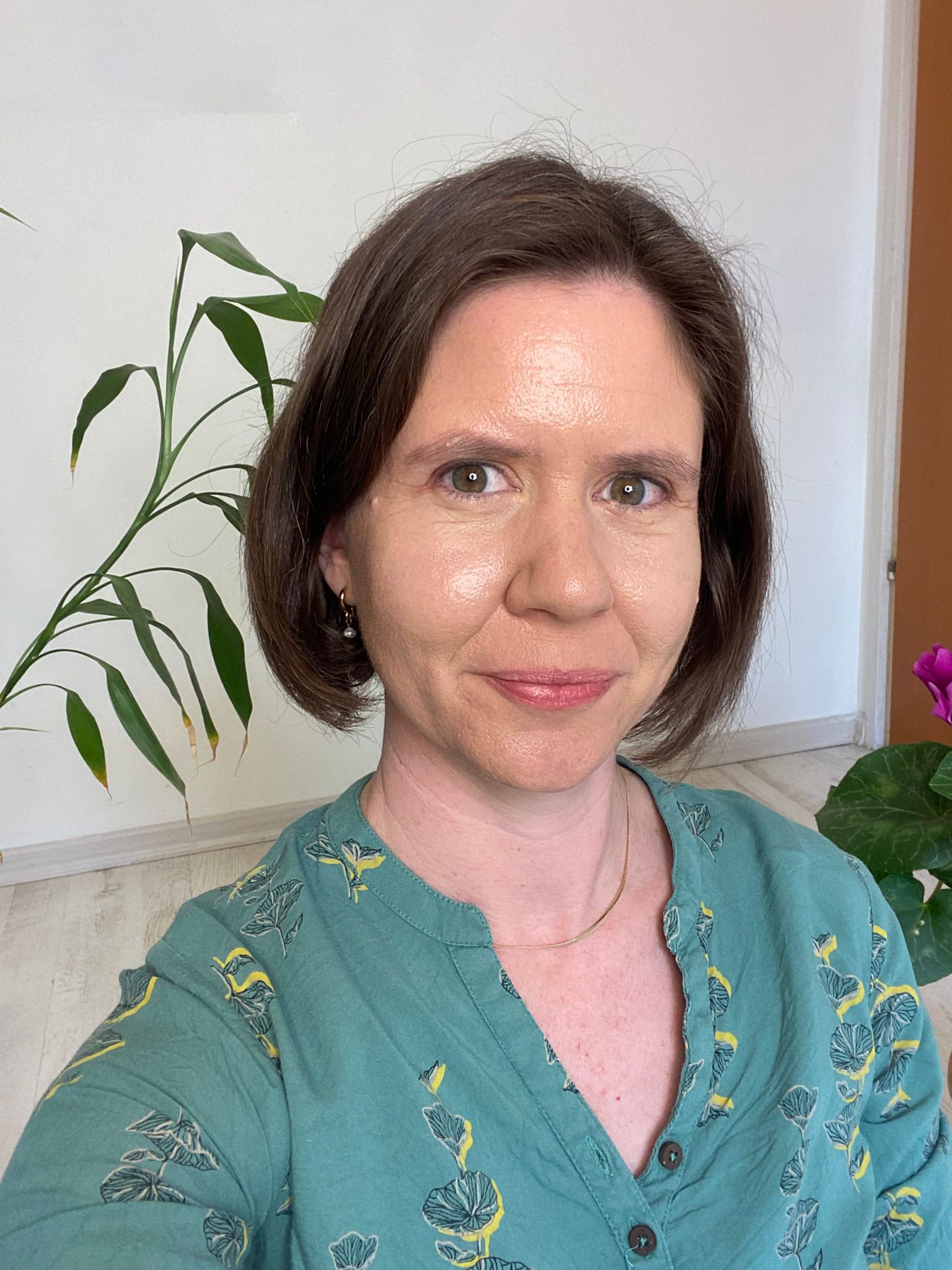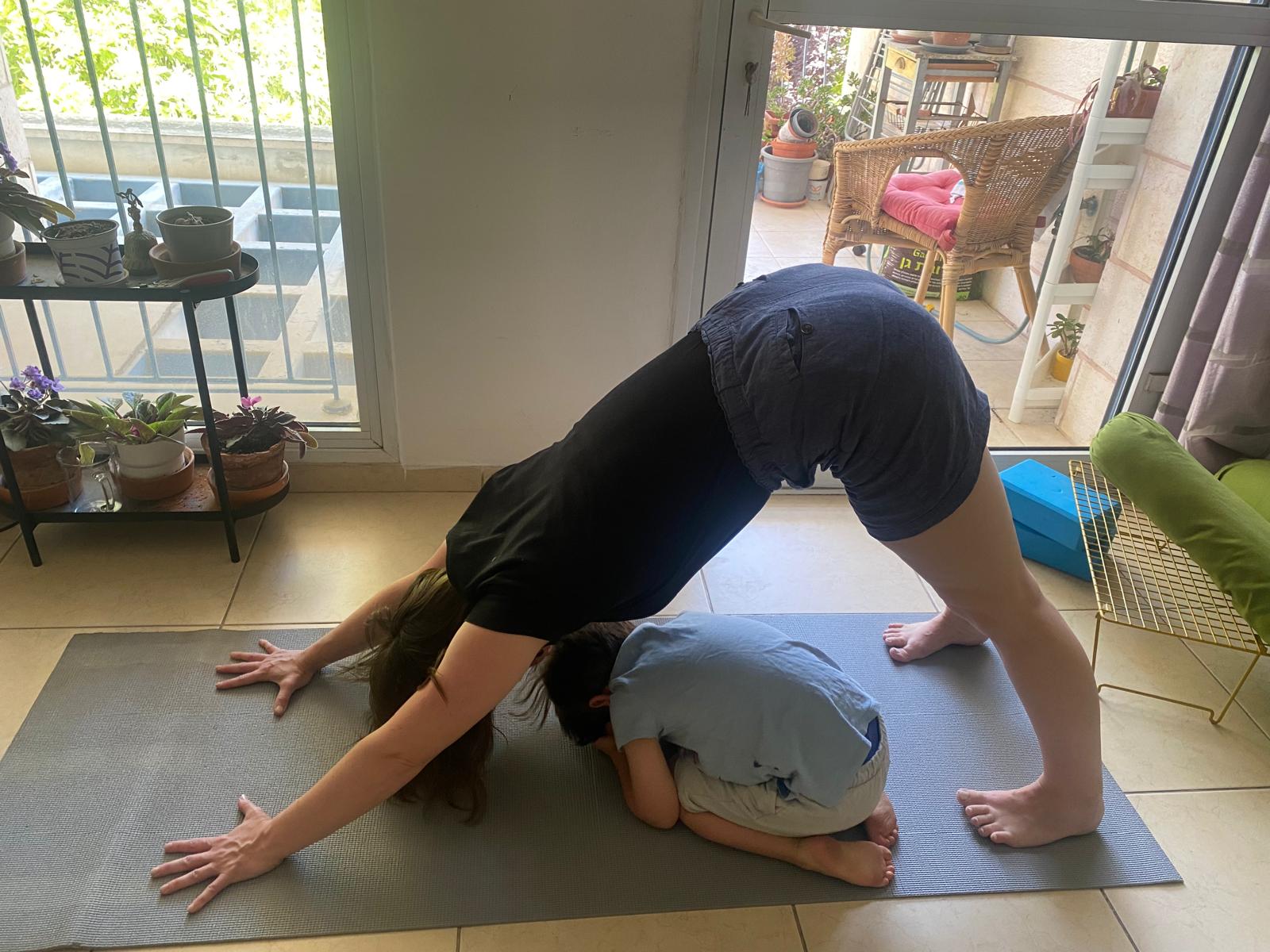There’s a pigeon who has laid eggs outside the window of my bathroom. Every time I open the door of the bathroom, no matter how quietly, she gets disturbed. I feel bad, acutely. When I was shown into this room Dheeraj told me they noticed the eggs for the first time when they came back from Diwali break, and they didn’t have the heart to push them out. Every time the pigeon flutters in alarm and walks away from her eggs I feel an ache in my heart. I know how the pigeon feels. I don’t want to be responsible for its fear, I want it to know her eggs are safe.
Yoga Teacher Rosa Santana on Supporting Mothers and Other Insights
September 23, 2025Motherhood and Yoga: Lessons from Rosa Santana
In my continuing quest to understand motherhood and become a better-informed parent, I’ve been reaching out to yoga teachers who can shed light on this path for me. Recently, I had an illuminating conversation with Rosa Santana, a mother of three daughters and a lifelong yoga practitioner.
“You never stop being a mother,” she says. Her own journey is inspiring—she was a gym rat long before she stepped into yoga, and she took her first yoga class while six months pregnant. She admits it was a terrible experience at the time. Up until then, she had taught step aerobics, which gave her fitness discipline but didn’t prepare her body for the nuances of pregnancy.
My Key Takeaways From My Conversation with Rosa
On the Asceticism of Motherhood: Agi Wittich
July 12, 2025Butter, Body Positivity & Balance
I recently finished reading Butter by Asako Yuzuki. Originally in Japanese, it is inspired by the true story of a woman accused of murdering several men by seducing them through delectable, home-cooked, gourmet food. Rika Machida is a journalist investigating the case. She manages to get an interview with the enigmatic Manako Kajii, the woman accused of these crimes, who is on death row. As Rika digs deeper and gets increasingly entangled in Kajii’s narrative, she’s forced to confront her own beliefs about beauty, desire and gender roles. The book explores themes of femininity, power, body image, and how society polices women’s relationships with food, pleasure, and autonomy. It challenges us to ask ourselves: are we truly free? And this question hit me hard because it helped me articulate something complex and uncomfortable about what the body positivity movement has become.
Postpartum Healing with Acupuncture: Boost Energy, Balance Hormones, and Sleep Better Naturally
April 29, 2025As a yoga teacher I knew that after I had a baby, I would have to be extra careful with the healing process. To rush to ‘get back’ could lead to nagging aches, chronic weakness, and a disconnect from my practice. But simply waiting for things to sort themselves out was also risky — a slow drift away from the strength and vitality I had worked so hard to build.
To answer my queries I caught up Dr. Shruthi Rao at the Bodhsara Wellness and Salt Studio. Our conversation focused on the benefits of acupuncture for postpartum women. From hormone support and emotional balance to better sleep, lactation, and pelvic healing — Dr. Shruthi Rao breaks it down beautifully.
Keep reading to learn what happens in a typical session, how it complements pelvic floor therapy, and how you can begin at home.
Yes, You Can Get Pregnant with Low AMH — I Did
April 22, 2025“If you sleep more Pragya your AMH will come up on its own,” said the man who sat in front of me, a doctor in one of Bangalore’s most famous maternity hospital.
I looked at him unconvinced. None of the research I’d read connected sleep to AMH. And in any case, wasn’t it natural for AMH to decline with age? I had a sneaking suspicion that this man was misleading me, using his authority as the ‘expert’ to say whatever he wanted to a woman grasping for straws of hope.
I’ve spoken extensively about my journey to conception. It was circuitous, confusing and daunting. In retrospect, what helped was understanding and appreciating what I had control over. So I committed to practicing yoga more diligently, reminding myself of the miracles it had brought into my life. I made space for rest, journaling, and time with friends—and above all, I refused to let science and medicine intimidate me.
Here’s how I dealt with my low AMH, and you can too.
I turned 43 this year. 43 looks different today than it did, say 10 years ago. At 43 women are now starting families, changing career paths, finding love….question and challenging their world views. I certainly found myself re-evaluating long held beliefs, thought and behavioral patterns. Including my approach to my yoga practice.
I’ve written extensively about my conception and pregnancy journey and the role yoga played in it. In retrospect I feel it’s important to point out that it was only the allopathic medical fraternity (“Western medicine” as many would say) that used the words “geriatric” or “old”. Alternative health practitioners, including my yoga teachers, never once saw the idea that I was too old to become pregnant as credible. To them, my body’s potential mattered more than my age. The irony is that many people think that this means according to yoga age doesn’t matter – but it’s quite the opposite.

Attending Sunday Soul Sante in December.
December 2024 went by in a whirlwind. The days were short and nights long and cold. All I felt like doing was reading late into the night with a hot drink and practicing some cozy yoga. But I ensconced myself in some warm clothes through the wintry days, made sure Kalindi stayed warm and healthy, chalked out some quality time with Animesh and even did some goal-setting for 2025.
TBH my initial list had about 10 resolutions that didn’t inspire me even a teeny tiny bit. I crossed off all but these two, which genuinely excite, and even motivate me.
At the outset this blog may look like it has nothing to do with yoga, but just like my Freddy Mercury blog, this one is indeed also a yoga blog.
A Gift is Always Welcome
It’s always great to receive presents. My husband gave me a desk a couple of months ago to put at this beautiful window we have in our bedroom. As I type this out I can hear the birds chirping. At least one of the birds is a nightingale! Outside the window are trees of various kinds.
What I was missing though was a comfortable chair to go along with the desk. For months I’ve been using an Iyengar Chair, so when my friend Medha said she wanted to give me a chair I gladly accepted.
Yoga & Chair Assembly
The chair is an Astrix gaming chair and super comfortable. While my husband assembled the chair I couldn’t help but notice that humans have an unconscious tendency to sit in postures resembling yogasasanas. I was inspired now just like I was with my Freddy Mercury blog and promptly started taking photos.
This is how the chair came to us. We took an inventory of the screws and other bits that

He started with assembling the wheels:
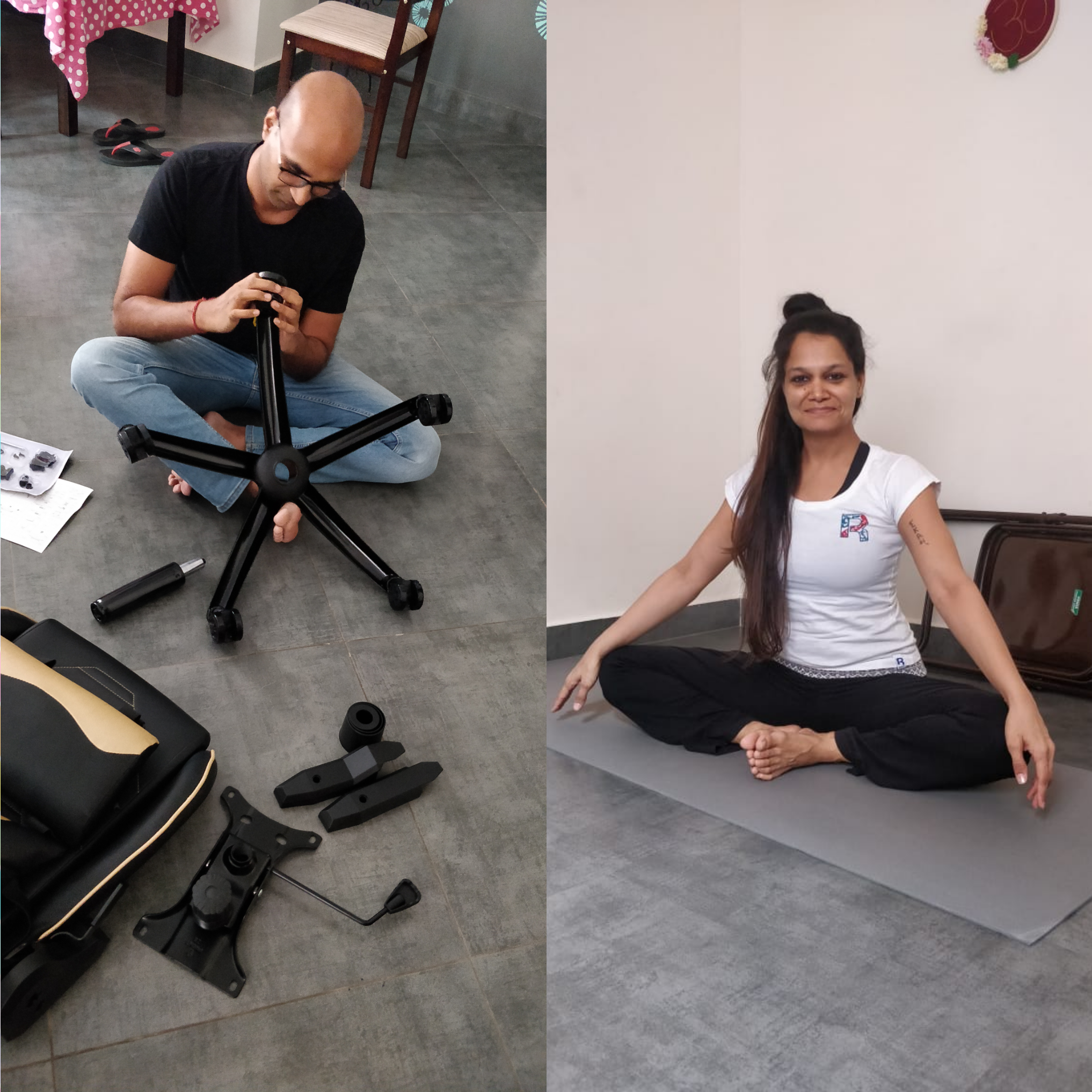
Reminds me a bit of Baddhakonasana.
Carefully reading the manual to make sure we don’t make any mistakes:
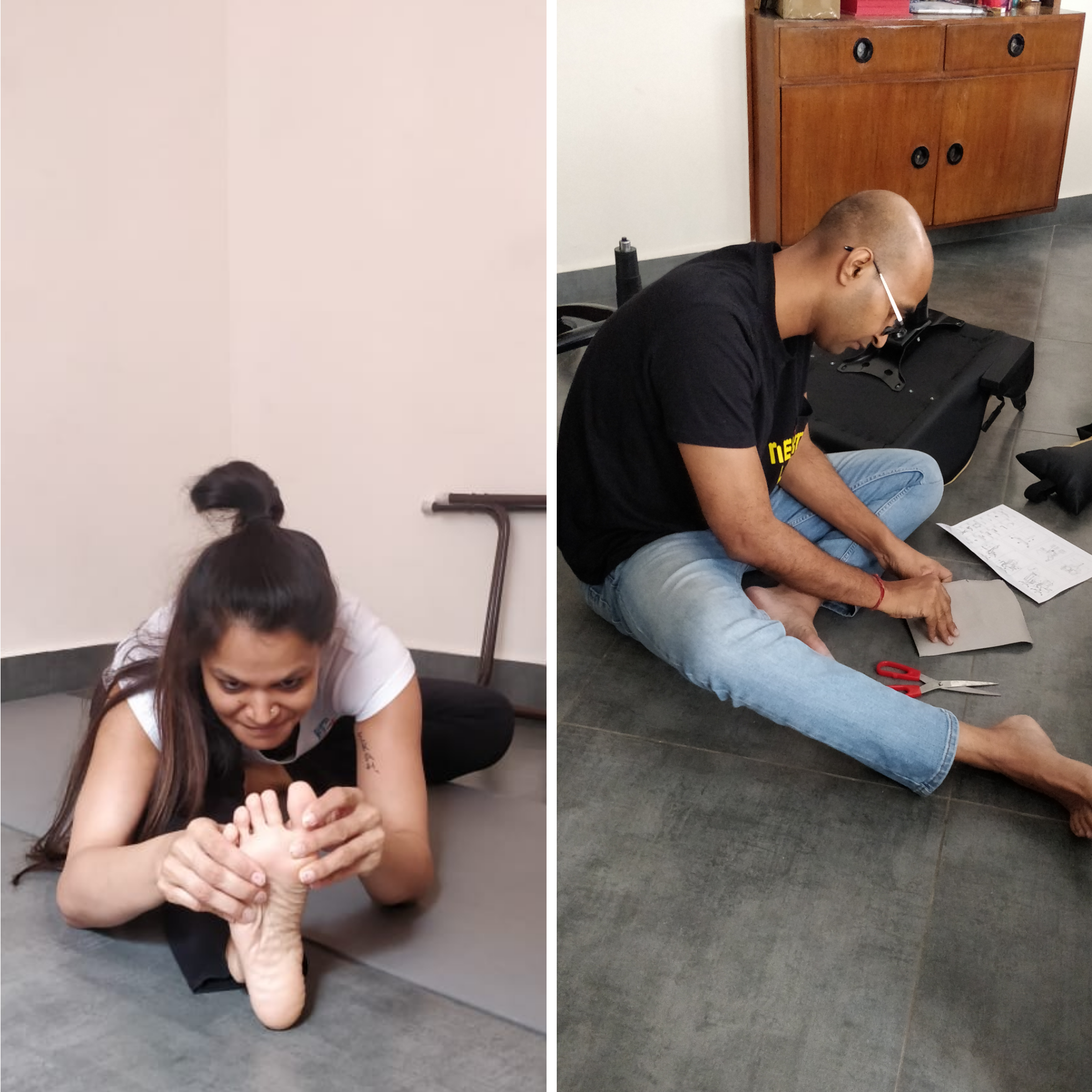
Sort of like Janu Sirsasana.
The backrest is comfortable and sturdy.
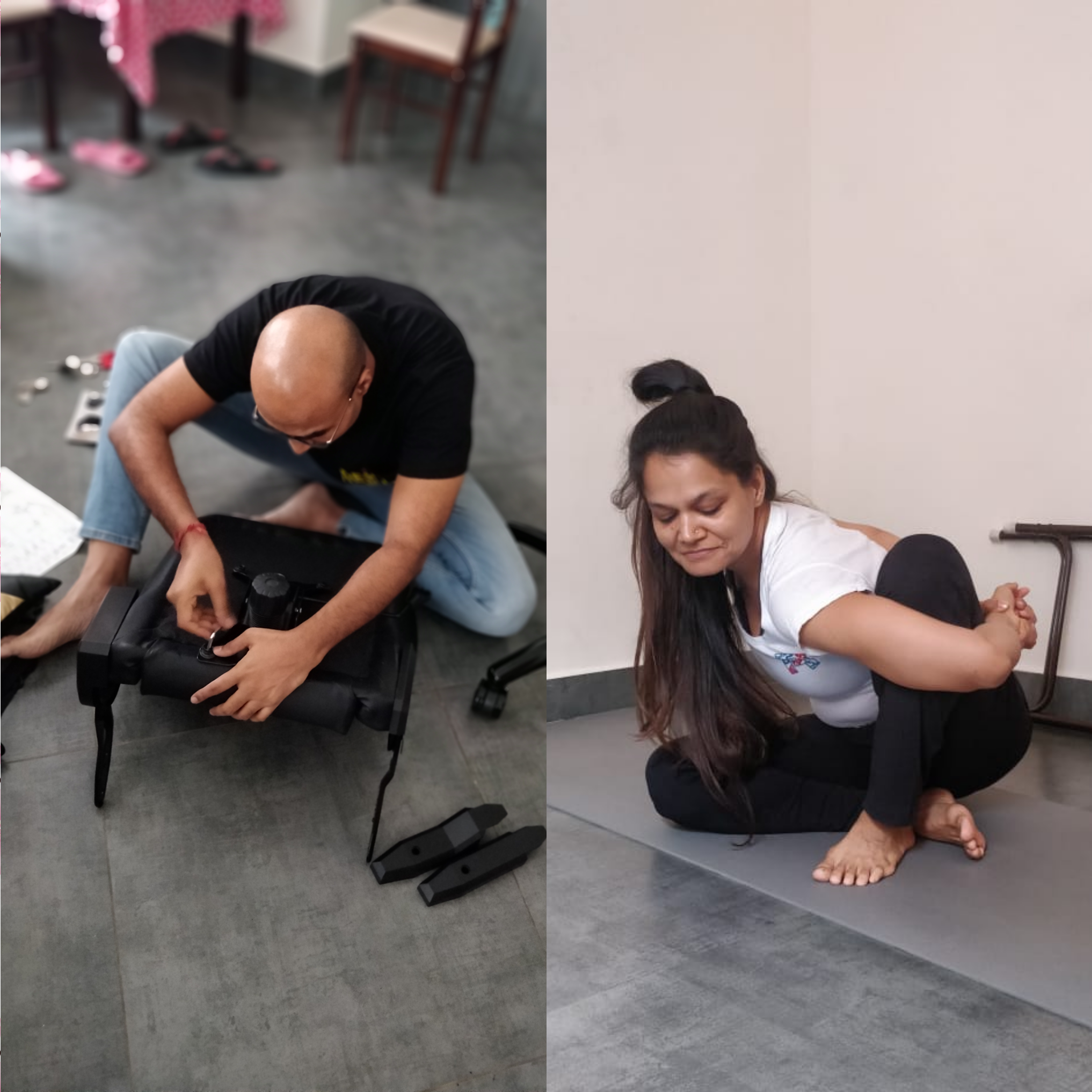
Marichyasana.
Making sure we don’t miss a screw.
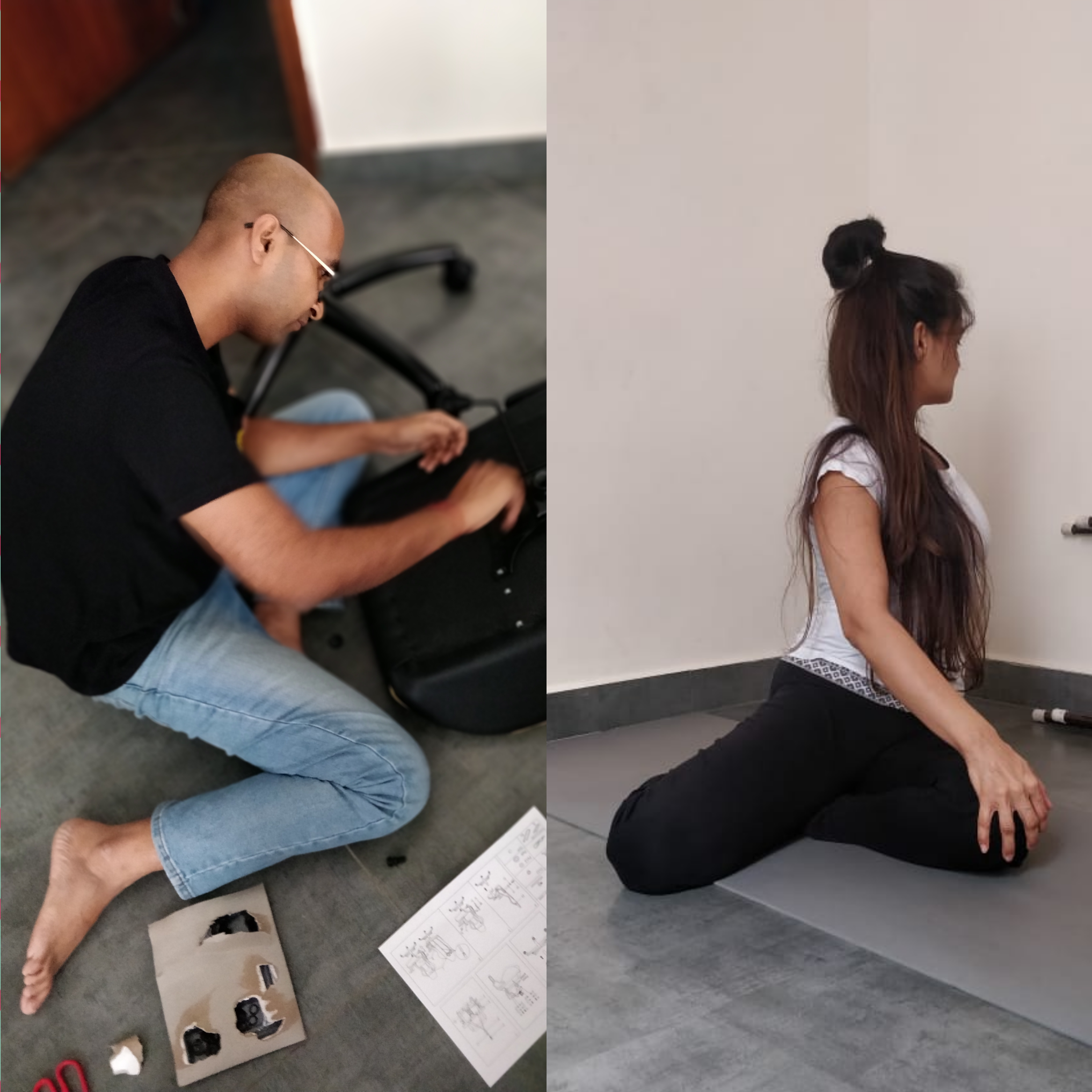
Bhardwajasana.
Putting the armrests together.
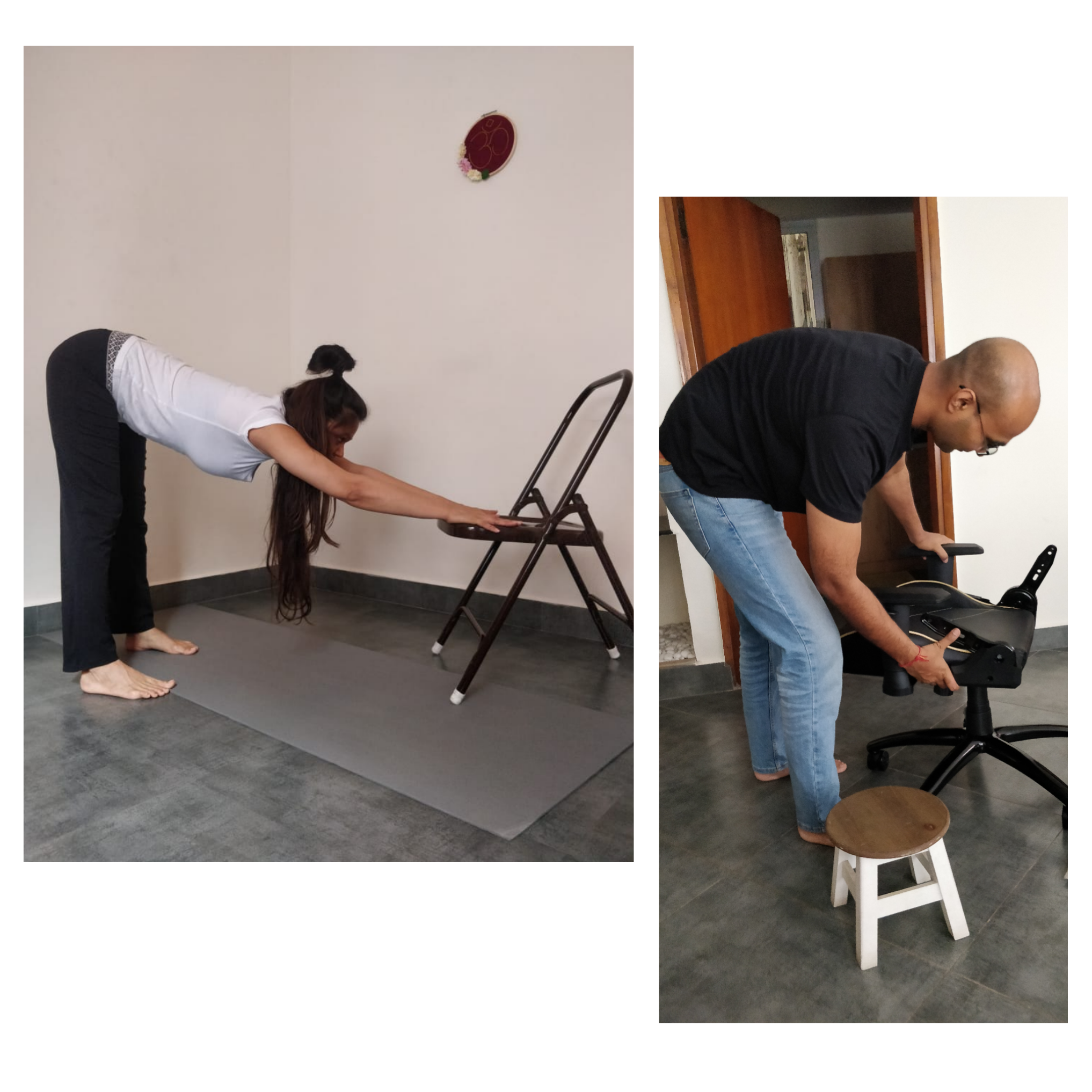
Ardhauttanasana.
Ensuring the wheels fit.
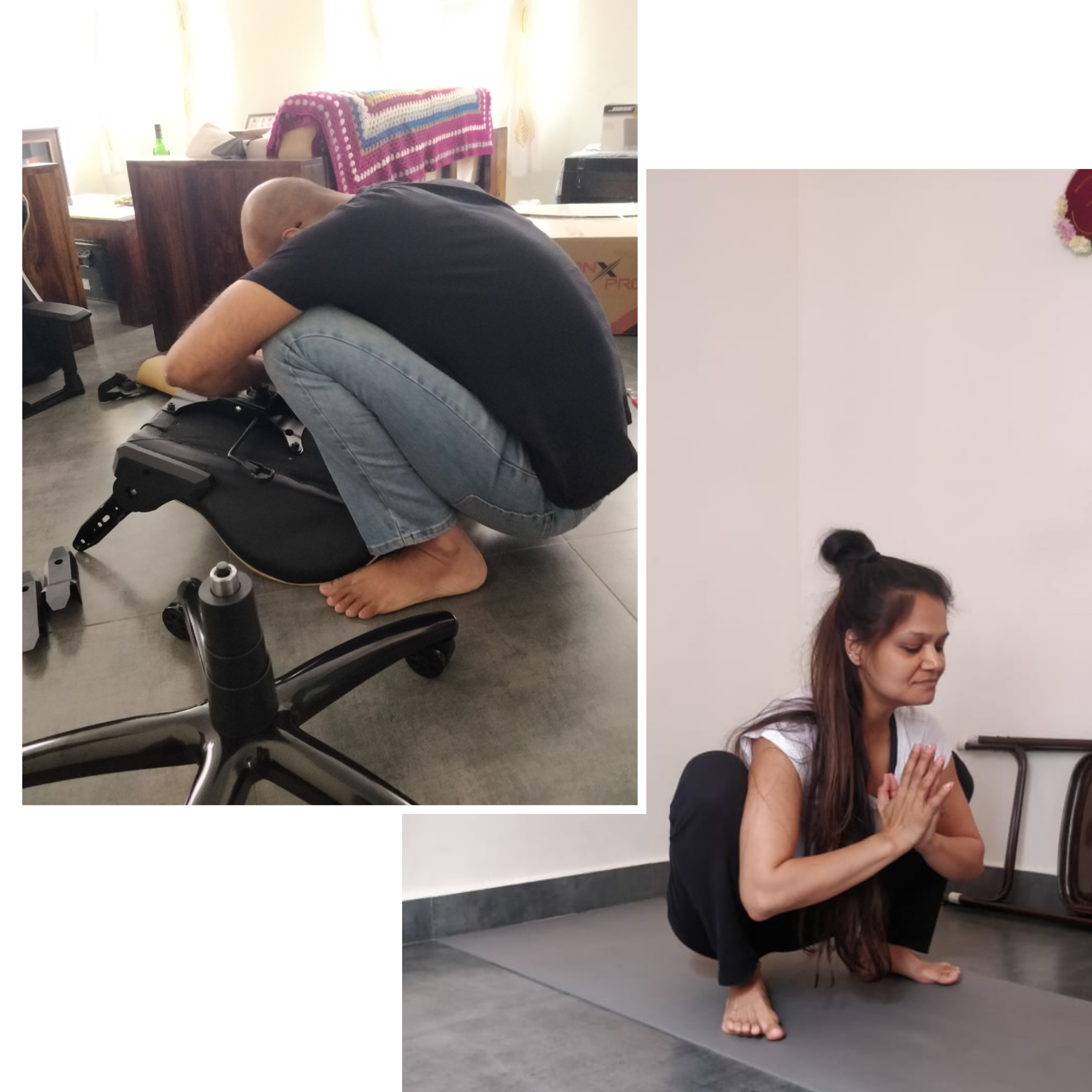
Malasana.
Always happy about building things. 🙂
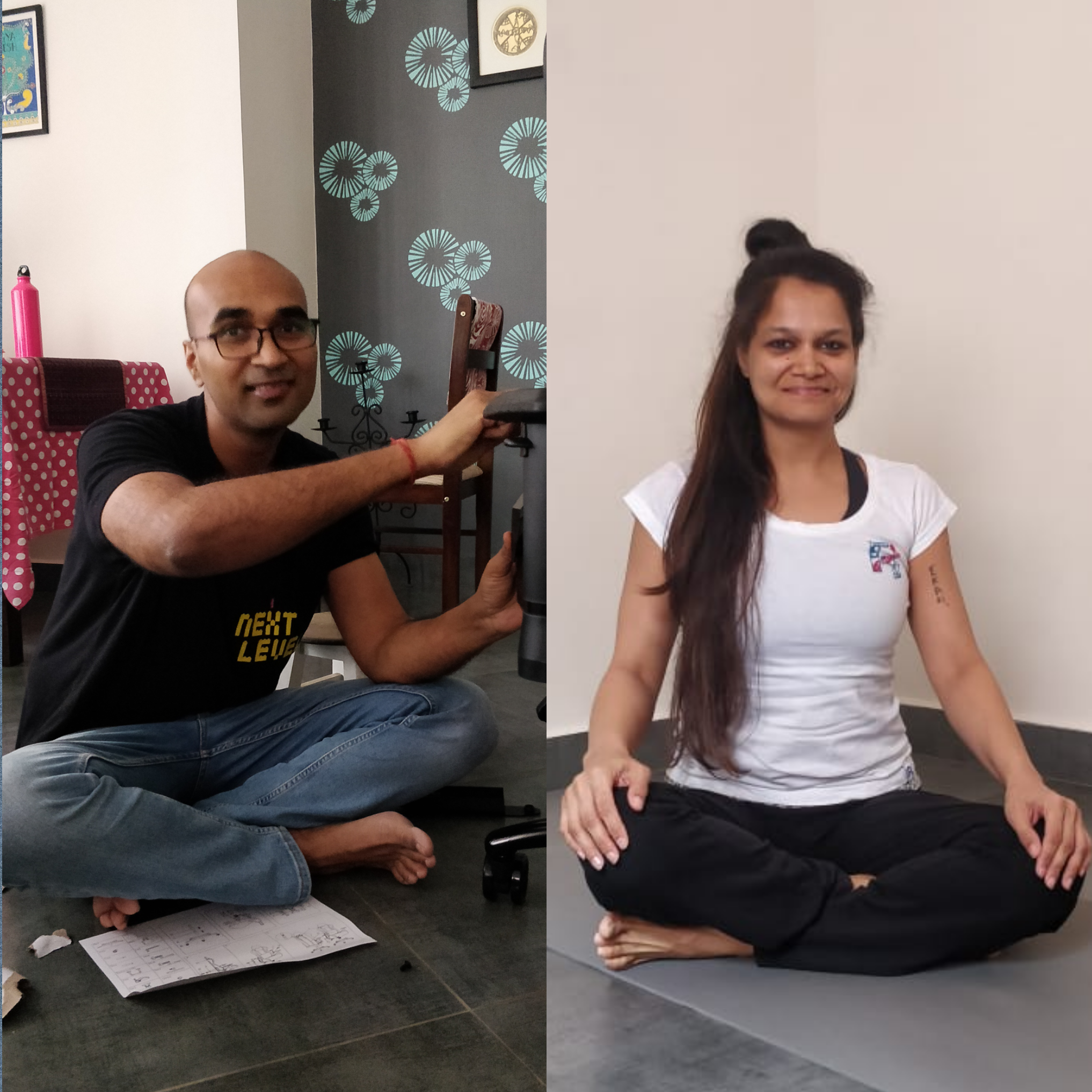
Sukhasana.
What do you think? Do you also find yourself seeing what you love everywhere? Do you think that this blog is a yoga blog?
I took a class the other day for a student who zooms in from Singapore. Just as we were about to start class she got a WhatsApp message. She (uncharacteristically) excused herself and checked it. Looking up she said, “My mom’s brother just passed away.”
I’m not sure what the ‘right’ reaction to this news is given the circumstances. The night before I heard that two of my husband’s friends have lost their mothers. During dinner my in-laws told us of a family friend, a doctor, who also succumbed. The week before that I got news that a family friend whom we’ve known since our days in Bangladesh, passed away in the hospital. Friends and well-wishers tried to frantically get in touch with her son. But in these times, the tone and timbre of our grieving has also changed. We are all going through collective trauma, ironically in isolation. But what about our healing?
So I asked her if she wanted to take some time, call someone, perhaps even postpone the class. We ended up continuing with the class.
I woke up this morning feeling like I need a week off to clear my head. It’s perhaps a symptom of being under long term stress. We managed the first lock down by going online, catching up with friends over wine on zoom, baking banana bread and having it with dalgona coffee. This second wave has brought with it tragic news on a daily basis. So tragic in fact that we no longer check the news for numbers. So tragic that most of us have actively started to do whatever we can to help – donating, amplifying voices on social media, and even just staying in and balancing our chores with work.
Stress over a sustained period of time starts to change people. What we are living through is not only stress, but also trauma. No wonder many of us have started complaining about fatigue and a sense of disconnect from our surroundings. We feel like we’re on auto-mode, robotically marking the beginning and end of days; the beginning and end of weeks. Half of 2021 will be over next month, and many of us can’t tell the difference between this year and the last.
I’ve bought bed-sheets, new flip flops, changed the arrangement of my yoga room, joined a yoga sutras chanting class, even set up WhatsApp for Business and included that on my Facebook page. Only to realize that these aren’t the changes I need.
Resilience is a way of coping with trauma, and many of us continue to be brave. What about the healing from this trauma? Psychotherapist and counselor Simi Mathew says sometimes just hanging in there and going through the trauma is also a healing process. “But the actual healing,” she says, “which is about letting go and healing the actual scar, that happens when we are aware of it and we actively seek help for it.”
Perhaps even as we trudge through another meeting; as we look wistfully at the beautiful weather in Bangalore these days; as we stay up late doom-scrolling and wake up groggy; even then our healing is happening.
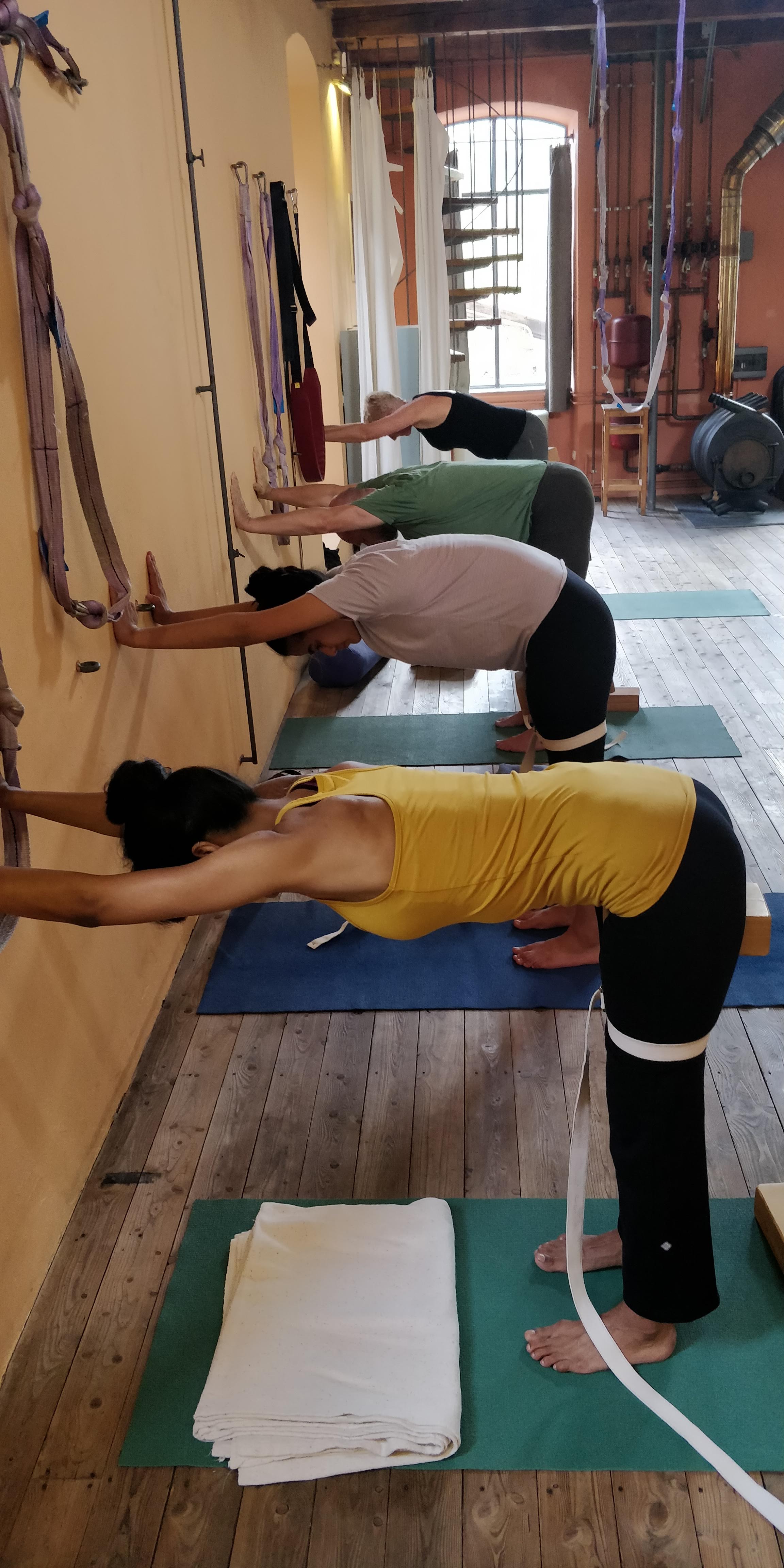
Scenes from our Liguria Yoga Retreat two years ago. Soon we shall all emerge from this time, ready to move, dine and practice together again.
